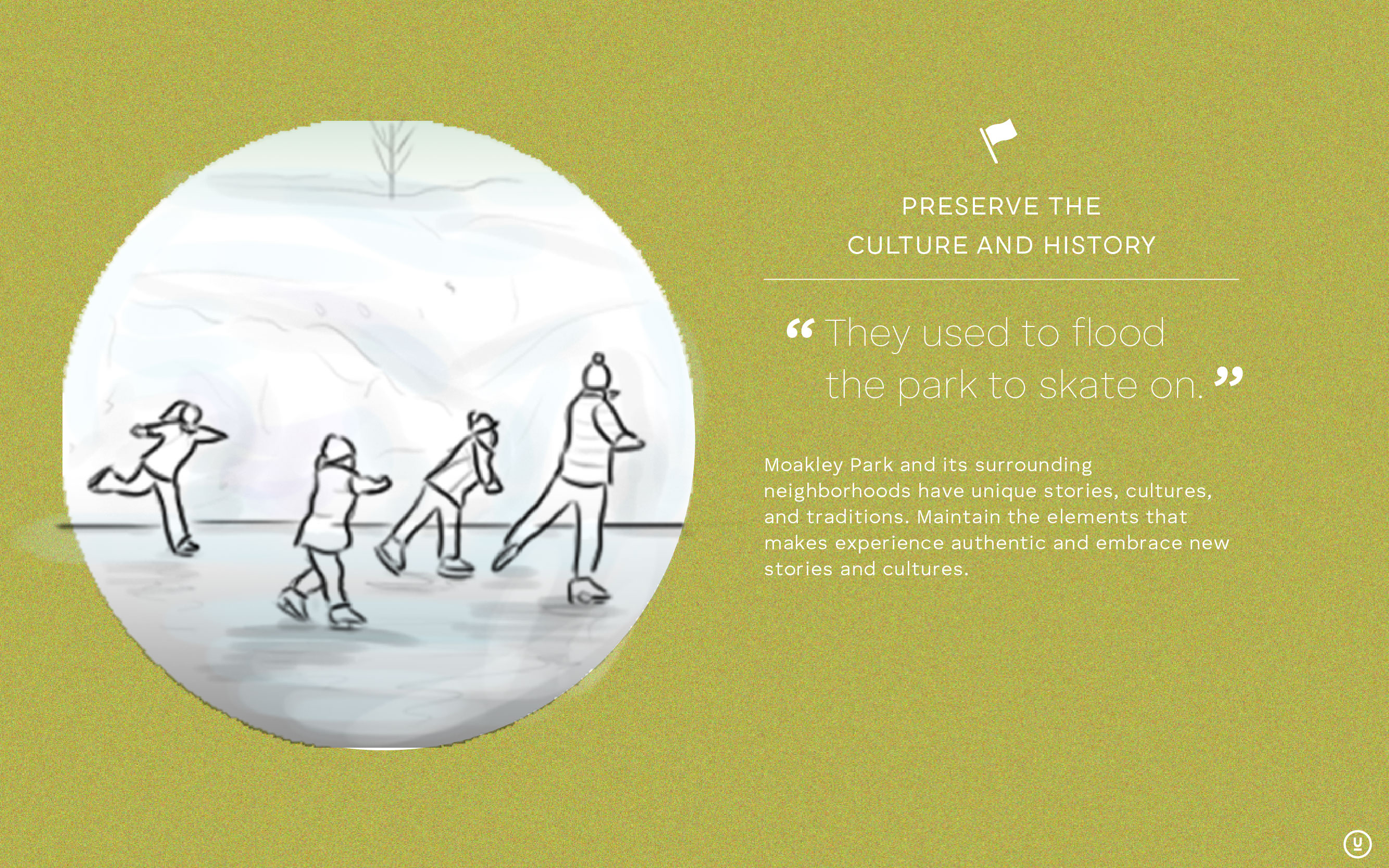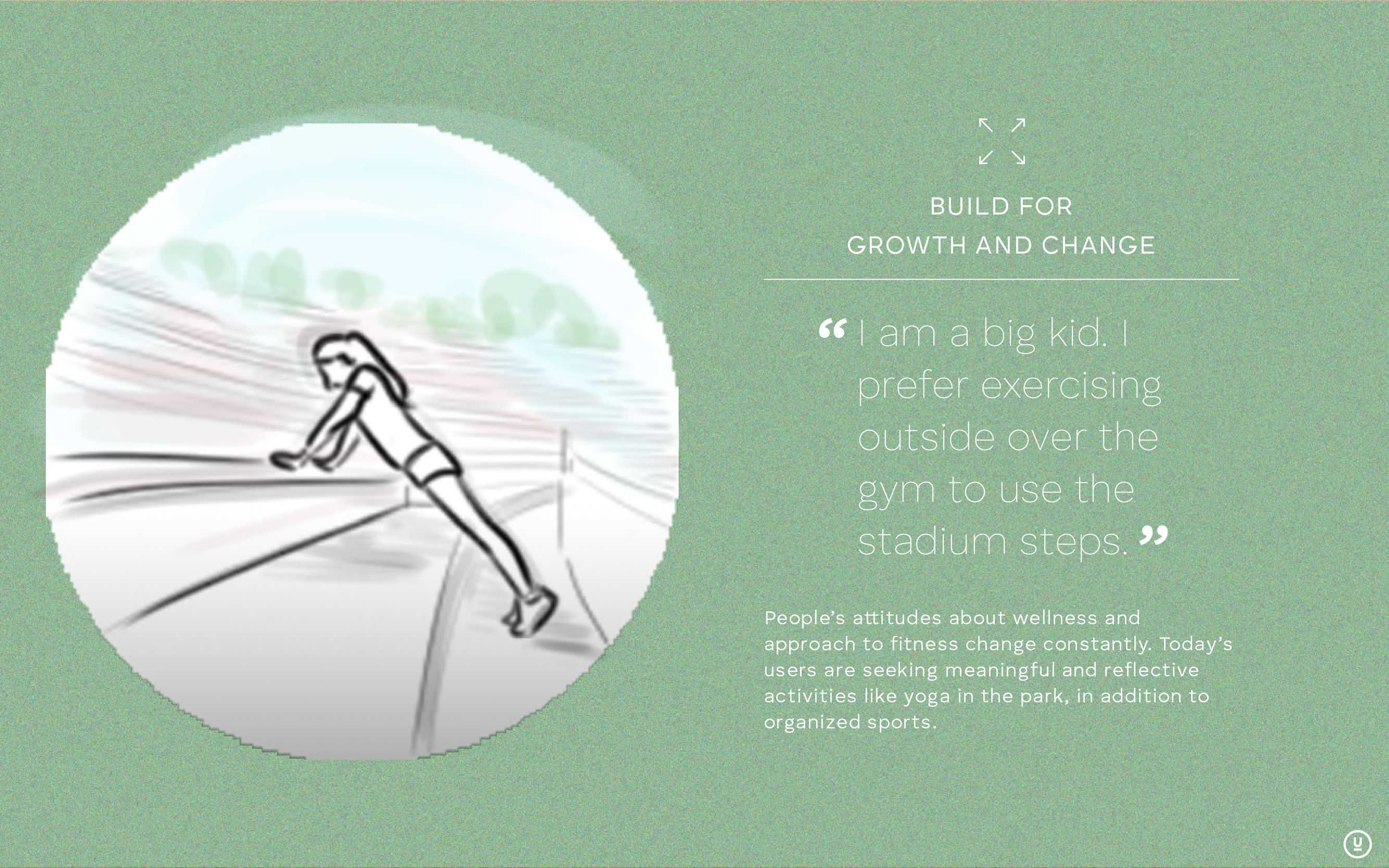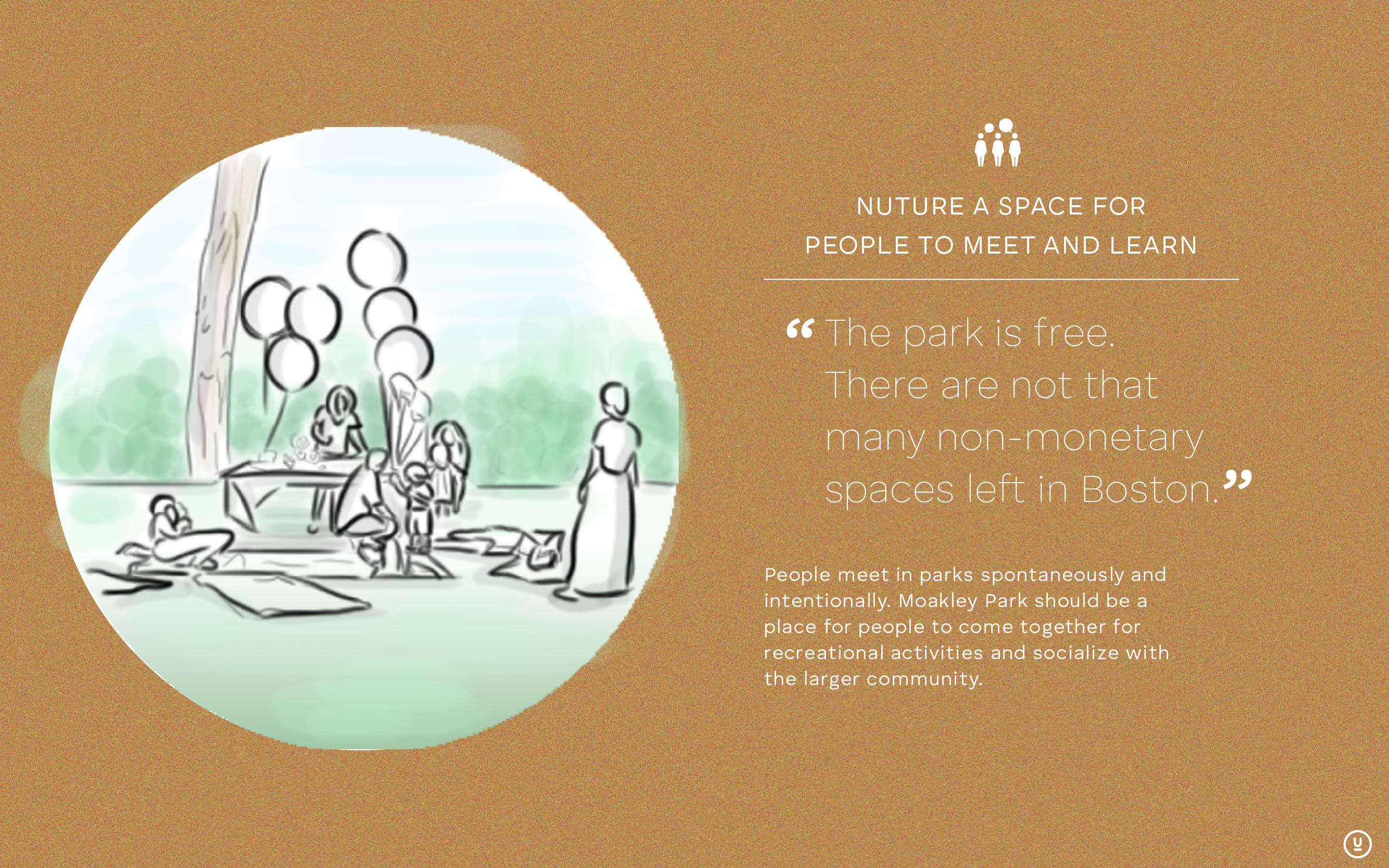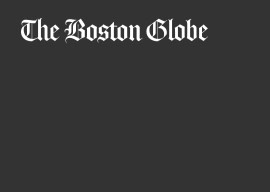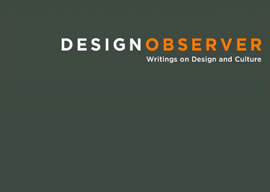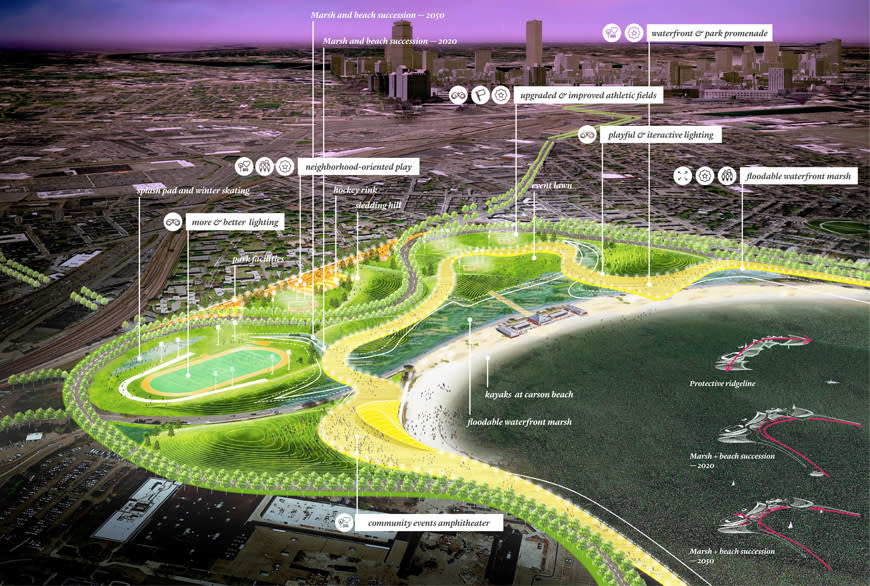
Back in October, Continuum participated in a fast-paced landscape design project to re-imagine Moakley Park in South Boston. Named for John Joseph Moakley, Boston’s 9th Congressional District Representative from 1973 to 2001, the park is one of the largest public green spaces in the city, sprawling along the edge of the harbor from JFK UMass to Andrew station on the Red Line. We collaborated with long-time partner Stoss landscape architects and urbanists on a human-centered vision for a future Moakley Park, in a competition sponsored by the Boston Society of Landscape Architects. We were thrilled when our joint submission won best in show, and that got us thinking: Why aren’t more designers partnering with architects on this kind of public space initiative?
Parks and public spaces are for people—for neighbors, students, tourists, new arrivals, and long-time residents. When the opportunity arises to create or re-design a major public park such as Moakley, the smart first question isn’t “What will the new park look like?” but “What should this new park should do for the city, and how should it grow with its community?” Here’s where involving an innovation design consultant like Continuum in the Moakley Park redesign matters—to get the right questions answered by diverse stakeholders, and to think about the park’s place in space (the growing and changing South End and Dorchester communities) and time (the next 10 to 50 years).
For this project, our role was to pull together the strands of many people’s stories, histories, and priorities to create a viable vision for the park’s future, one that makes sense for today’s community and coming generations of users. While working, we kept in mind the idea that people are complicated. They move, try new hobbies, form relationships, socialize, get caught up in fads, work, and manage unpredictable physical, financial, and environmental challenges. By understanding the lives and needs of the people who use Moakley Park today, from five-decade “settlers” to new arrivals in a gentrifying neighborhood, we can form good hypotheses about the role the park will play in this community in years to come.
For us, Moakley Park presented a familiar design challenge. Leveraging our past year’s research into future trends in Boston (via projects with MassDOT and the MBTA, Boston Public Schools, the Boston Planning and Development Agency, and others) helped us think ahead to how our city could look and function in 2040 and beyond. The kids playing soccer on the Moakley Park football field now will have kids, and grandkids, of their own. They will grow up into a world where seas are rising and coastlines changing, technology permeates life in ways we’re just beginning to imagine, and work and play look very different from what we know today. Moakley Park is not a consumable product or an ephemeral experience, it’s a cornerstone of this community—a place that needs to change with its neighbors, to welcome the next generation and the ones after that.

